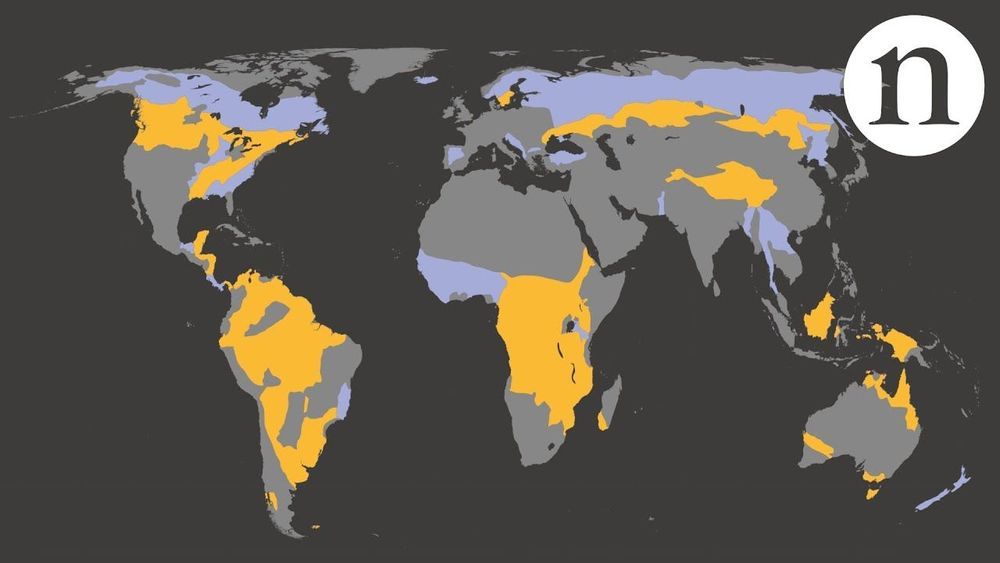Circa 2016
Richard T. Forman and Jianguo Wu call for global and regional approaches to urban planning.

Circa 2016
Richard T. Forman and Jianguo Wu call for global and regional approaches to urban planning.
When the Wright brothers pioneered their first flight in 1903, they dreamed of transforming the way our world connected. It’s safe to say they would be astonished at the progress of aviation. From that 59 second flight traveling a distance of 852 feet, we have established a world where there is an airport in nearly every major city, giving people the opportunity to see the globe in ways the Wright Brothers dreamed of.
Watch Giant Flow Batteries Could Power Your City In The Future, an Earth video from Seeker.
For the first time, scientists have created life with genetic code that was developed from scratch.
A University of Cambridge team created living, reproducing E. coli bacteria with DNA coded entirely by humans, according to The New York Times. The new bacteria look a little wonky, but they behave more or less the same as natural E. coli. Learning to rebuild genomes from scratch could teach scientists how DNA originally came to be — and how we can manipulate it to create new life.
Researchers at Indiana University School of Medicine have found a way to charge up the fight against bacterial infections using electricity.
Work conducted in the laboratories of the Indiana Center for Regenerative Medicine and Engineering, Chandan Sen, Ph.D. and Sashwati Roy, Ph.D. has led to the development of a dressing that uses an electric field to disrupt biofilm infection. Their findings were recently published in the high-impact journal Annals of Surgery.
Bacterial biofilms are thin, slimy films of bacteria that form on some wounds, including burns or post-surgical infections, as well as after a medical device, such as a catheter, is placed in the body. These bacteria generate their own electricity, using their own electric fields to communicate and form the biofilm, which makes them more hostile and difficult to treat. The Centers for Disease Control and Prevention estimates 65 percent of all infections are caused by bacteria with this biofilm phenotype, while the National Institutes of Health estimates that number is closer to 80 percent.
Continue reading “Researchers develop electric field-based dressing to help heal wound infections” »
Ancient “chewing gum” holds Scandinavia’s oldest-known human DNA, found at a site in western Sweden and dating to about 10,000 years ago.
Physicists at the National Institute of Standards and Technology (NIST) and partners have demonstrated an experimental, next-generation atomic clock—ticking at high “optical” frequencies—that is much smaller than usual, made of just three small chips plus supporting electronics and optics.
Described in Optica, the chip-scale clock is based on the vibrations, or “ticks,” of rubidium atoms confined in a tiny glass container, called a vapor cell, on a chip. Two frequency combs on chips act like gears to link the atoms’ high-frequency optical ticks to a lower, widely used microwave frequency that can be used in applications.
The chip-based heart of the new clock requires very little power (just 275 milliwatts) and, with additional technology advances, could potentially be made small enough to be handheld. Chip-scale optical clocks like this could eventually replace traditional oscillators in applications such as navigation systems and telecommunications networks and serve as backup clocks on satellites.
Continue reading “NIST team demonstrates heart of next-generation chip-scale atomic clock” »
Hewlett Packard Enterprise (HPE) has a shiny new toy. The information technology firm announced today that is spending $1.3 billion to acquire supercomputer manufacturer Cray. HPE, which is a business-facing spin-off of the Hewlett Packard company, will instantly become a bigger presence in the world of academia and the federal government, where Cray has a number of significant contracts. It will also enable HPE to start selling supercomputer components to corporate clients and others.
